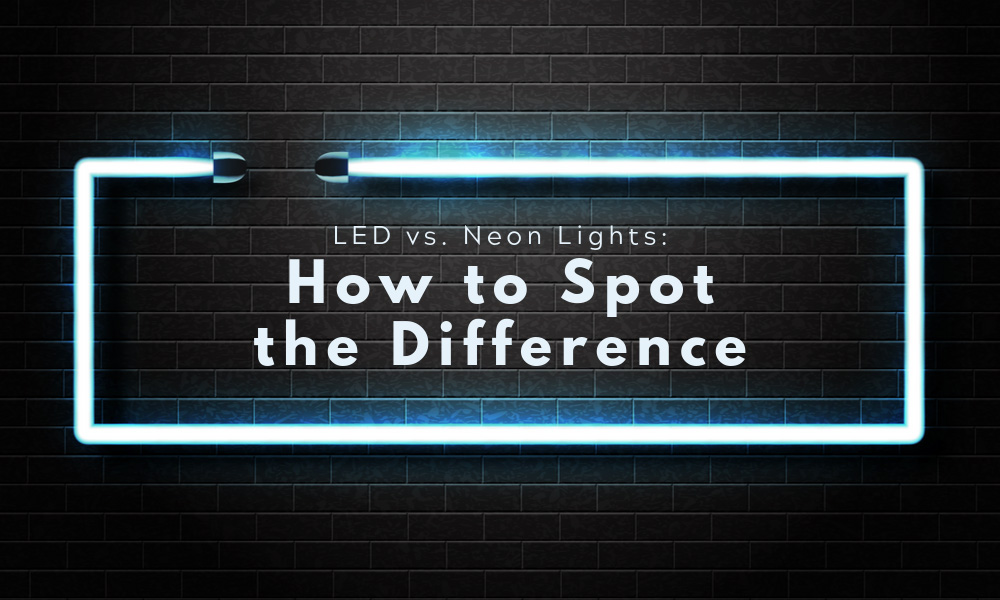LED vs. Neon Lights: How to Spot the Difference
When debating LED vs neon lights, knowing how to spot the difference is crucial. Understand the primary traits of each with this helpful guide.
by Jantec Neon • October 14, 2019

At first glance, LED and neon signs may seem quite similar. Both are an effective and alluring way to advertise your business, but when you’re debating LED vs. neon lights, how to spot the difference is very important. Luckily, there are a few key characteristics that make it easier for you to differentiate between these two lighted signs.
Neon Lights
Neon signs have been popular in the United States for many years, and it’s with good reason. The warm glow created by the vibrant and colorful signs has intrigued customers since its invention in the early 1900s. While neon signs are most commonly used to advertise a business, there has been a recent shift toward using personalized neon signs for decorations at weddings and other events.
The process to create neon lights remains mostly unchanged; the production of modern neon signs is still quite similar to what it was in the 1960s. Unlike many products currently on the market, neon signs are not mass produced by a machine. Each neon sign is hand-made by skilled glass craftsmen using real glass tubing. The glass tubes are heated and bent into the desired shape for the sign. The tubes are then filled with a purified gas mixture that is then ionized by high voltage cathodes to create the bright colors we see on neon signs. Since neon signs are created with glass tubing, they’re often a bit wider and taller than LED signs. They may also be a bit heavier due to the materials required to provide power to, and to mount the finished neon tubing
The best way to spot the difference in LED vs neon lights is to assess the brightness and direction of the light itself. LED lights may appear brighter when viewed head-on, but because they’re a directional light source, they may appear dimmer when viewed at an angle. Neon lights, on the other hand, create a 360-degree light source, which allows someone to view the sign perfectly from almost any angle.
LED Lights
LED stands for light emitting diode. LED lights were originally used in small handheld devices, such as calculators, and were once quite expensive to make. As technology improved, so did the production of LED lighting displays, and they’re now widely used in businesses across many industries. Like neon lights, LED lights are available in multiple colors and designs. The main difference between LED and neon lights comes from how each style is produced and the way that production affects the sign’s functionality.
As the name suggests, LED lights are made up of several small diodes created from semiconductor material. When strung together, these diodes create a neon-like lighting effect. Unlike neon lights, in which the light is encased in glass tubes, LED lights are wrapped in a protective polymer casing. Many smaller lights create LED lights and signs, so they have a light source more dependent on direction than neon lights. Similar to flashlights, the light from LED signs are directed forward, and this may cause inconsistent illumination when not viewed directly. Additionally, LED signs can sometimes light up certain portions of the sign and not others. This means they can create the illusion of movement, which can catch the consumer’s eye. This is another way to distinguish between LED and neon signs.

